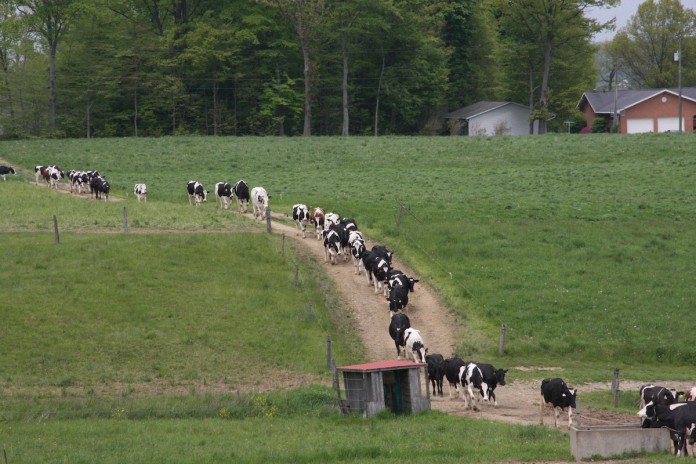During the past several months, there has been a lot of polling in regards to the presidential race in an attempt to predict who would win the election. After many months of political conjectures, the time finally came to cast our ballots, whether by mail or in person. Then election day came and went, and ballots were counted for days before the winner was announced.
As I reflect on this, there is some resemblance of this process to the nature of the dairy industry. Forecasting of various market aspects occurs to predict what may occur in the future. However, there is a lot of difference between polling and forecasting.
Polling is assessing the opinions and plans by a population of people. At least with forecasting, there is the examination of available data on various factors to predict a future outcome. Projecting is similar to forecasting, taking into account current trends in the marketplace.
We are always curious what those brave ones think as they forecast the future for the dairy industry. But, why are we so interested? Is it just our curiosity or is it so we can be better prepared for the potential market conditions? Hopefully, it truly is the latter.
Projections
As I reflect on November 2019 and the projections for the 2020 market conditions for the dairy industry, the likelihood of a pandemic was nowhere in the projections. As the forecasters look ahead now, certainly the pandemic is a factor taken into consideration, but they have no way of knowing if another catastrophic event will happen in 2021.
Besides the pandemic, many costal states have experienced above average rainfall and wind due to the number of hurricanes and tropical storms in 2020 which have impacted crops and herds. So what will 2021 look like for the dairy industry? Let’s observe the projections, without knowledge of any outlier events.
The U.S. Department of Agriculture (USDA) in November 2019 projected milk production at very close to the actual 2019 milk production, but then there were only about two months to project forward at that time. In November 2019, the projected milk production in the U.S. for 2020 was similar to the October 2020 projection with only three months to the end of the year.
With the milk price, the projected and actual for 2019 were similar, but the 2020 milk price is going to end up lower than the projected price in November 2019, primarily to the pandemic. So what about 2021? At this point, the USDA projects that the milk production will be higher in 2021 than 2020 by about 1.4%, similar to the annual increase in production per cow. However, we know that increased milk production is suppressive to the milk price paid to farmers due to the excessive milk in the market place.
Thus, with this projected production, continued disruptions caused by the pandemic, and pending changes in the trade due to uncertainly in the political front, milk price is projected to be lower in 2021 than 2020 by about $0.40/cwt. So what does this mean for dairy farmers in 2021?
If these projections are viewed as a caution to brace for a continuation of challenges to profitability for dairy farmers, then I encourage you to examine the following carefully:
1.) Revenue side of the ledger:
a. Carefully watch the ever-changing price of fat and protein in milk and feed to optimize the components in milk relative to the current prices.
b. Continue to focus on milk quality by lowering SCC.
c. Focus on ways to improve milk production and milk production efficiency.
d. Carefully examine the risk management programs for protecting yourself from some of the volatility in milk prices.
2.) Expense side of the ledger:
a. Know your cost of production. Are there some areas that could be improved?
b. It will likely be a year to avoid major capital purchases unless absolutely necessary.
c. Examine carefully the major costs of production — feed, labor and heifer rearing. Improvements with these don’t always mean reduction in costs but could be improvement in efficiency for the costs incurred.
d. Is it time to restructure your debt given the presently low interest rates?
There have been a lot of gestures by folks that they can’t wait until 2020 is over. Well it’s almost over, but then are we ready for 2021? We certainly are hopeful for a more healthy, peaceful and stable conditions in 2021 than in 2020; however, we must learn from our experiences and be ready for 2021.
As a dairy farmer, it appears that being prepared for some challenges in the market in 2021, especially with milk prices, is going to be a necessity. As you prepare for 2021, we salute you as you accept the challenge to face the projected market conditions and wish you the best as you manage your operation for the most favorable outcome.













